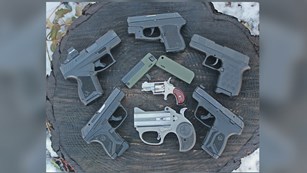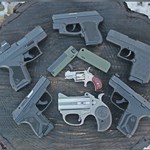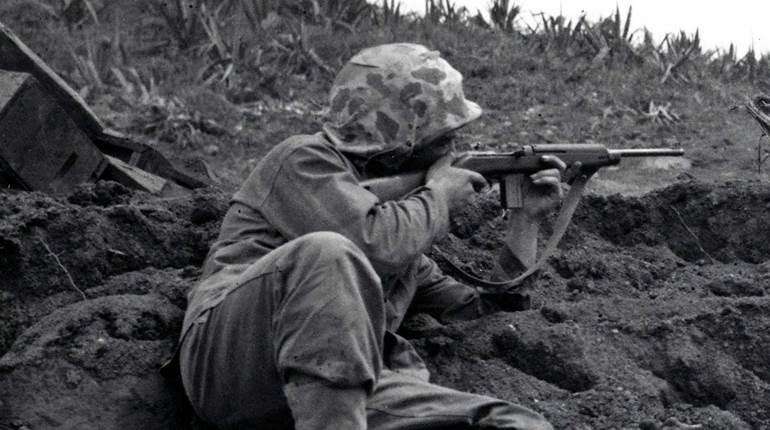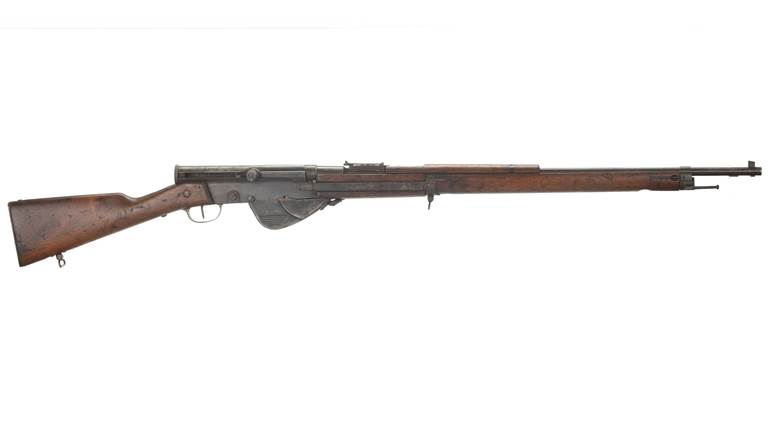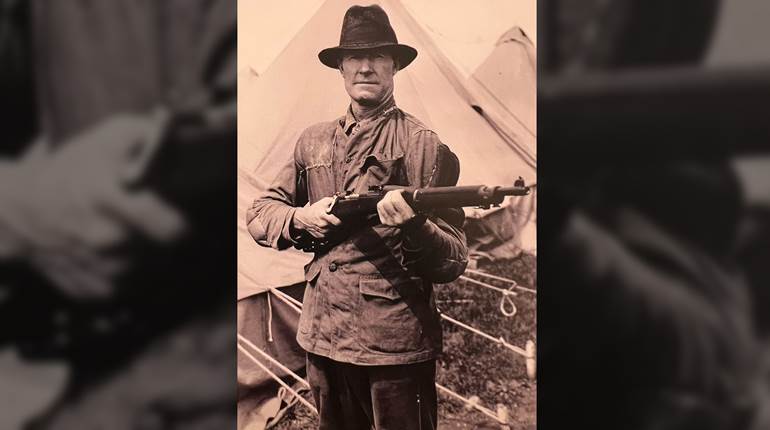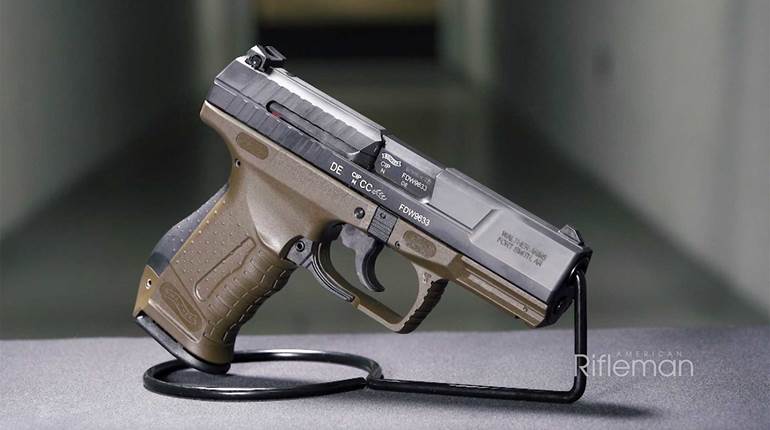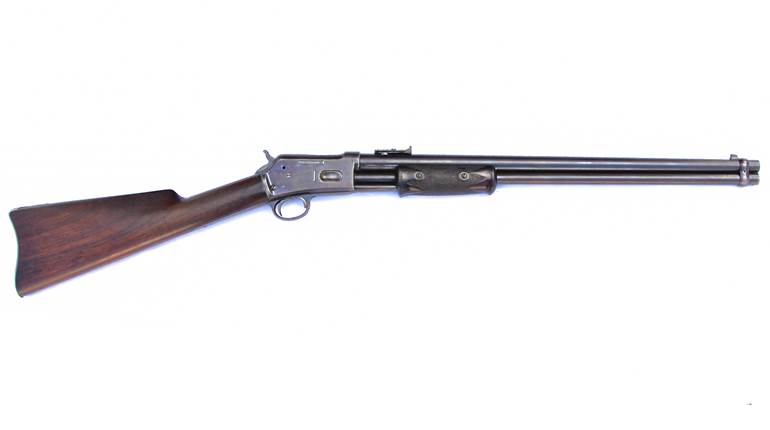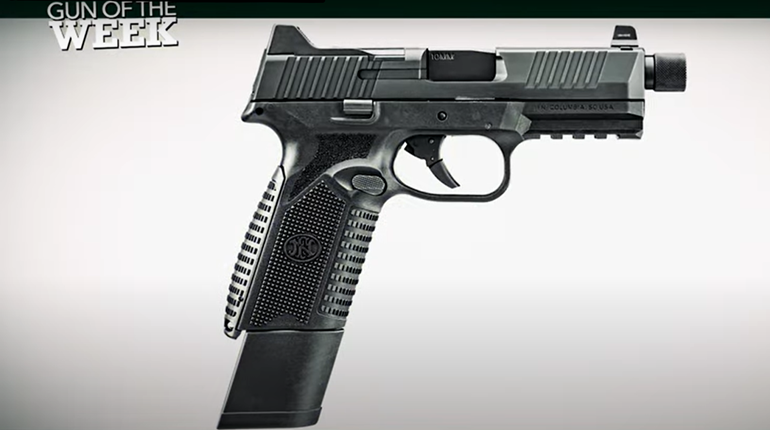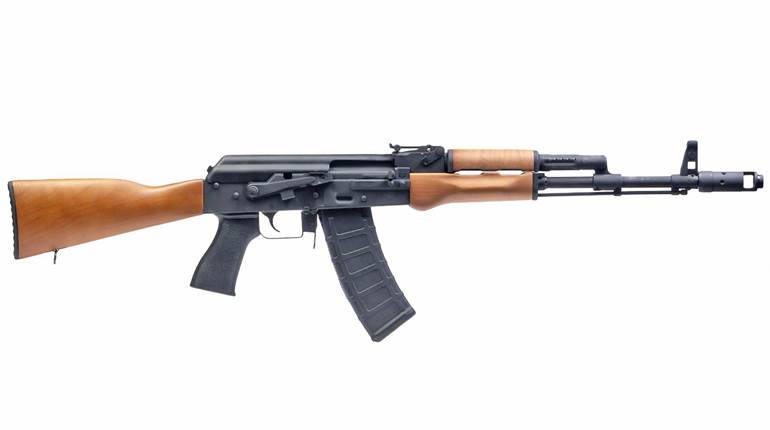
Man had barely learned to fly when he decided to both fly and fight. With both in their infancy, the machine gun was the natural partner of the aircraft in this endeavor.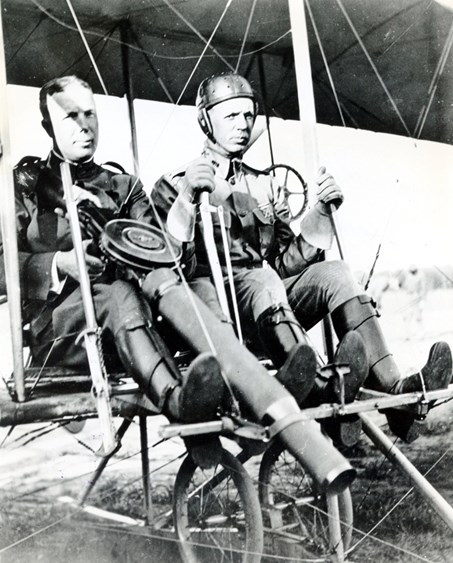
Don't try this at home. On June 7, 1912, the Lewis Gun and a U.S. Army Wright Flyer went airborne together for the first time at College Park, Md.
On June 7, 1912, with a prototype Lewis Gun strapped to the “passenger seat” and foot bar of a Wright Model B Flyer, U.S. Army Capt. Charles Chandler and his pilot, Lt. Roy Kirtland conducted the first successful firing test of a machine gun carried aloft in an airplane. It is not known what they were shooting at that day over College Park, Md. The fact that the Lewis Gun and the Wright aircraft worked together was enough to cement the concept in many military minds. World War I would soon put the new notion to the ultimate test.
Knights of the Air
When the guns of August 1914 fired across Europe, the thunder of the cannons drowned out the insect-like buzzing of the first aircraft. That soon changed as the great armies of the empires soon became bogged in the static warfare of the trenches. Aircraft offered the best means (sometimes the only means) to see beyond the mud and gore of “No-Man’s Land” and provide reconnaissance of enemy positions, troop movements and intentions.
In the earliest days, opposing recon pilots merely waved or saluted their enemies. Simply flying the early crates was dangerous enough. But the days of airborne chivalry were short-lived. Weapons soon appeared in the cockpits, and the carnage on the ground was repeated in the air. Draglines and grappling hooks evolved to pistols, shotguns and carbines.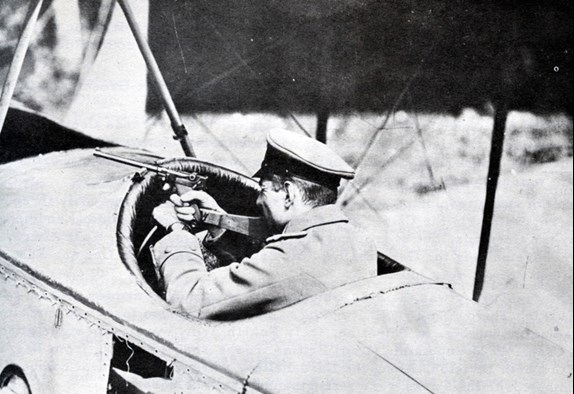
Early in the war, this German aviator took firepower to the skies with a P08 Luger Artillery Model pistol with shoulder stock. This combination was popular with early war German fliers, as was the Mondragon self-loading rifle.
The Imperial German Flying Corps adopted the Mondragon Model 1908 self-loading rifle (chambered in 7x57 mm) and issued them to observers in two-seat aircrafts. Made in Switzerland for Mexico, the Mondragon became the “Fl.-S.-K. 15” (Flieger-Selbstladekarabiner, Modell 1915, or the Aviator's Self-loading Carbine, Model 1915). These were issued with 30-round drum magazines, and the advanced rifles were certainly a major improvement over bolt-action rifles or Luger pistols. But everyone knew that the machine gun offered the real firepower needed in aerial combat.
Tractors and Pushers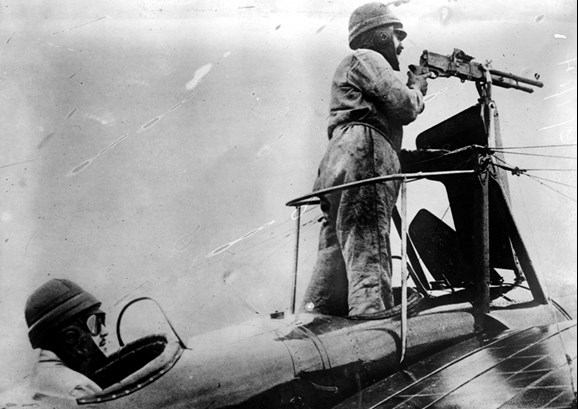
This Hotchkiss Portative machine gun was mounted high in the forward cockpit of a French Deperdussin TT monoplane.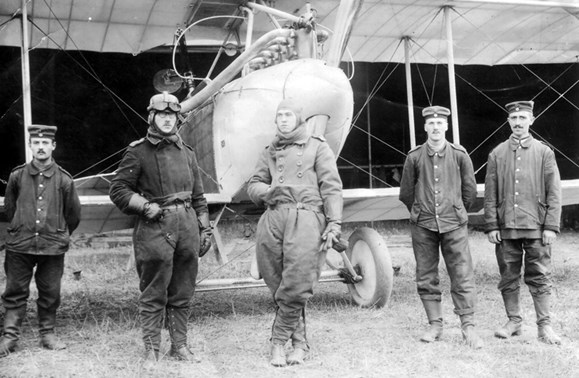
This early German AEG two-seater has a Parabellum machine gun mounted to swivel forward at an angle. Note the wire guards to prevent firing into the propeller arc. 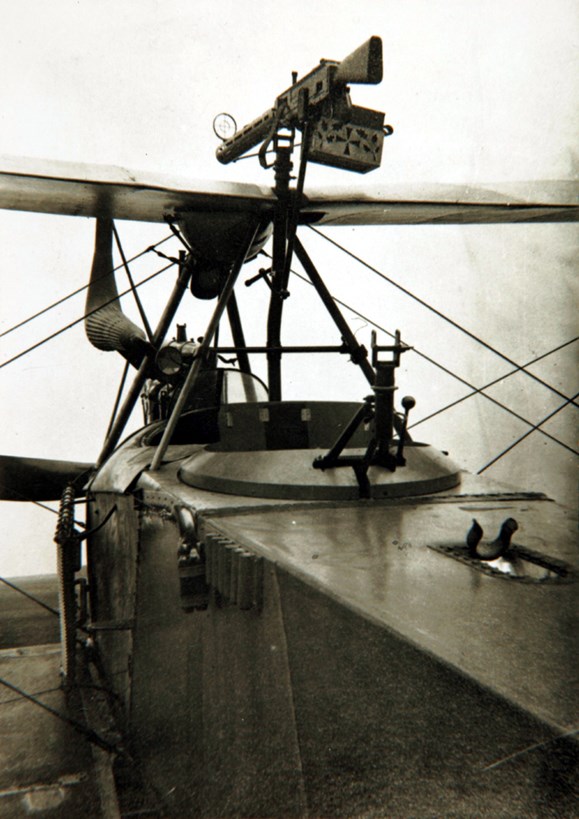
A German LVG two-seater with a Parabellum machine gun was set up to fire forward over the wing and propeller. The observer needed to stand in his cockpit to operate it.
An aircraft with a forward mounted engine was called a “tractor.” An aircraft with a rear-mounted engine was called a “pusher.” Tractors were faster and more powerful, but the forward-mounted propeller presented a massive obstacle to firing in that direction. Machine guns were mounted at awkward forward-firing angles, requiring a strange crab-like approach to the target. Others were mounted above the top wing, to fire over the propeller arc. This was more effective, but still quite difficult to aim and nearly impossible to re-load or clear a jam. Consequently, most early “tractor” aircraft relied on the observer’s gun mounted in the rear cockpit.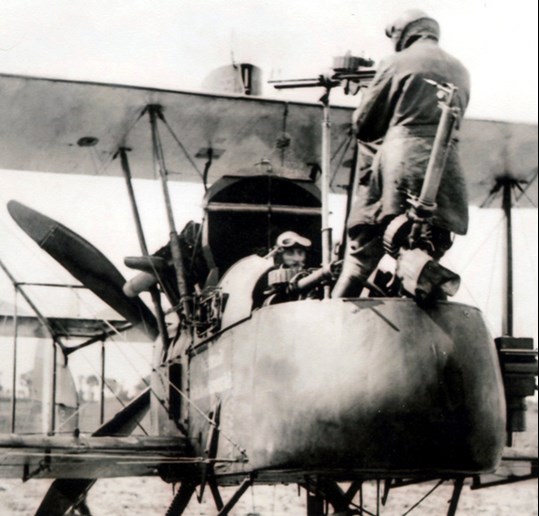
The British Fe2b “pusher” biplane had a rear-mounted engine, which was awkward, but in the early days it provided the best option in forward-firing guns.
Pusher aircraft offered significantly reduced aviation performance. However, their forward view was excellent, and there were no worries about shooting off one’s own propeller when firing to the front. Thus, “pusher” aircraft became the best of the early aerial gun platforms. Nonetheless, danger from “friendly fire” was always present. It was necessary to develop elaborate methods of catch spent casings, ejected from machine guns, as the hot brass passing rearwards in the aircraft’s slip stream could easily shatter the propeller spinning behind. The best solution was still to come.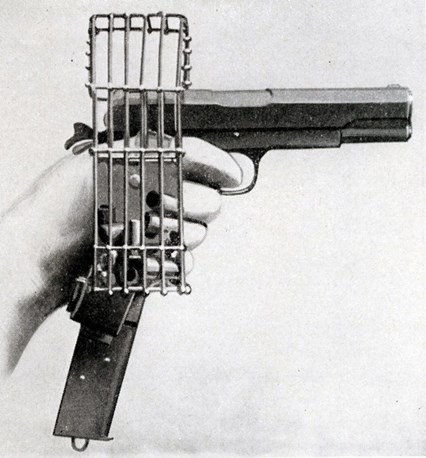
A special cage was developed for the M1911 pistol, and it intended to catch the ejected cartridge casings to prevent them from passing through the propeller of a “pusher” aircraft.
The First Aerial Machine Guns
When we think of the classic machine guns of World War I, it is normally the belt-fed, water-cooled guns that come to mind. But they are particularly heavy and not easily accommodated within the tight confines of a wood and canvas flying machine.
During 1914, France’s Raymond Saulnier successfully experimented with the relatively light Hotchkiss Model 1909 Machine Rifle (also called the Benet-Mercie Machine Rifle or the Hotchkiss “Portative”) in one of his aircraft. The Hotchkiss Model 1909 was light enough for aerial work, and its 600 r.p.m. cyclic rate provided the right level of firepower. However, it was fed by rigid 25-round strips, which proved difficult to reload in the midst of combat. A 75-round “bobine” drum with a belt was developed, and this was helpful, but the belt was non-disintegrating and the heavy new weight (on the right side) threw the gun out of balance. Even so, the Hotchkiss Model 1909 was the preeminent Allied aviation machine gun in the first year of the war.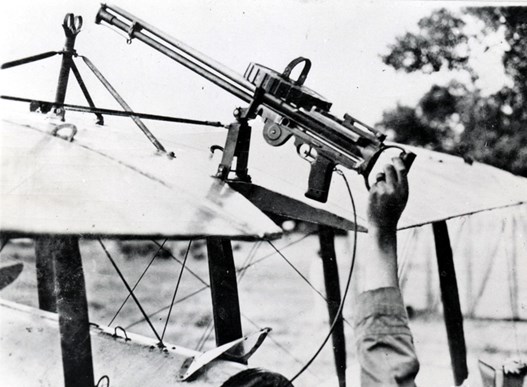
The overhead mount was one solution, demonstrated by a Lewis machine gun mounted on the upper wing. Note the locking system and the firing lanyard attached to the trigger. Changing ammunition drums was extremely awkward in combat.
The true jewel in the crown of early aviation machine guns was the Lewis Gun. American-designed (but sadly ignored by U.S. Army Ordnance Dept.), it was quickly adopted by the Belgians and the British. Allied aviators coveted the Lewis Gun from the start. Unfortunately, Lewis Guns were in short supply, and British, French, Italian and Belgian aviation armorers were forced to beg, borrow and steal Lewis guns until the turn of 1918.
Roland Garros and the “Deflector Plates”
Roland Garros had been a pre-war daredevil pilot, and he was the first man to fly across the Mediterranean. After the war began, Garros became a recon pilot. In December 1914, he visited the Morane-Saulnier Works, to learn about Saulnier's experiments in attaching metal deflector wedges to propeller blades, allowing a machine gun to be fired forward through a whirling propeller. Working with Saulnier, Garros soon had a deflector plate fitted to his Morane-Saulnier Type L aircraft.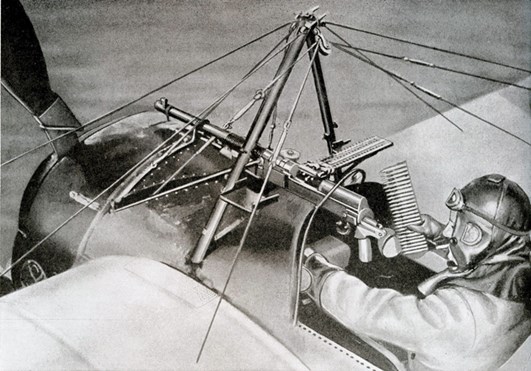
This strip-fed Hotchkiss Portative machine gun mounted on a French Morane monoplane is in the style used by Roland Garros. Note the heavy deflector plates on the propeller.
Equipped with the deflector plates, Garros had a “flying gun,” that could simply be pointed at the enemy aircraft. As such, on April 1, 1915, Garros achieved the first aerial victory by firing through a “tractor-aircraft” propeller. He shot down two more German aircraft within the next two weeks. On April 18th, his plane was hit by ground fire, and he was forced down behind German lines. Unable to destroy his aircraft before he was taken prisoner, the Germans learned the secrets of his curious modification.
Anthony Fokker and His Interrupter Gear
Anthony Fokker is usually credited with the invention of the “synchronizing gear” that allowed a machine gun to be fired through a spinning propeller. When Roland Garros was shot down in April 1915, and the armored deflector plates on his propeller discovered, Germany’s efforts on developing this interrupter gear were significantly accelerated.
Fokker was a Dutchman, an aircraft engineer, and a skilled pilot in his own right. Evidence shows that a synchronizing device had been in development at Fokker’s company for nearly six months before Garros’ capture. Regardless, the German Army Air Service wanted results, and quickly.
The missing element proved to be Fokker’s pushrod control mechanism that synchronized the machine gun to discharge only when the propeller spun out of the line of fire. As with every new design, there were failures. Within the first year of its introduction, several German pilots were lost when the interrupter gear malfunctioned and their propeller blades were shot off; they shot themselves down.
Despite the dangers, Germany was now in sole possession of the technology that would (temporarily at least) tip the fortunes of the air war in their favor.
The Fokker Scourge
Anthony Fokker’s company produced a push-rod controller, a genuine synchronizing gear, where impulses from a cam driven by the engine controlled the firing of the machine gun, allowing it to fire forwards without damaging the propeller. It was quickly added to a Fokker-designed aircraft, the Eindecker (monoplane) fighter. Ultimately, the Eindecker would be the first aircraft developed to leverage a synchronized, forward-firing gun.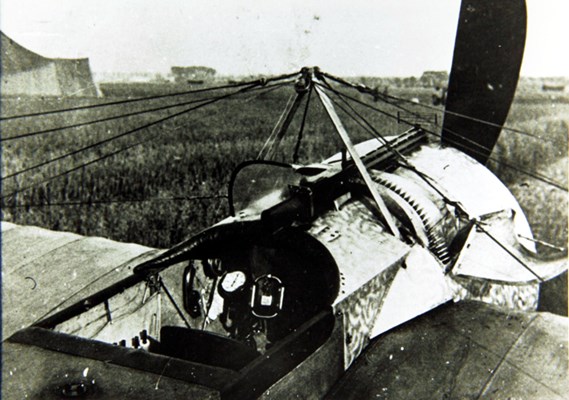
The Fokker Eindekker fighter was the first to mount a forward-firing gun synchronized with the propeller.
Armament for the Eindecker series was the 7.92 mm IMG 08 “Spandau” machine gun. Normal rate of fire was 500 rounds per minute, and this was slowed down considerably by the synchronization gear. Most Eindecker fighters carried just a single IMG 08, but experimental versions of the aircraft carried up to three guns, but the added weight of the additional guns and ammunition badly impacted the overall weak performance of the aircraft.
The Spandau 7.92 mm IMG08 was the air-cooled, aircraft version of the famous German MG08 machine gun.
From August 1915 to March 1916, the awkward Eindekkers ruled the skies over the Western Front, gaining air superiority in what became known as the “Fokker Scourge.” The myth of the Eindekker’s performance was revealed in March 1916 when an intact example was captured and tested. At the same time, more advanced French and British aircraft, finally equipped with their own “interrupter gear,” began to arrive at the front.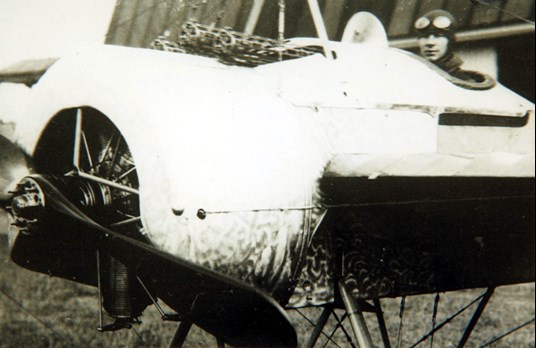
This Fokker Eindekker experimentally mounted triple IMG08 machine guns. Although presenting fantastic firepower, the weight of the triple guns and their ammunition was too much for the tiny aircraft to bear.
The Aircraft and the Gun are Forever Linked
The remainder of the Great War witnessed the rapid progression of aerial armament. Synchronized, forward-firing guns became commonplace. Fighters carried them, bombers did, too. Machine guns like the German IMG 08, Allied Vickers, and Austro-Hungarian Schwarzlose were soon doubled up in search of maximum forward firepower.
Armament for the rear gunner in two-seaters continued to improve, but none better than the Lewis gun were found. Shortages of Lewis guns plagued the Allies until well into 1918 (when the Marines arrived in France, their Lewis Guns were taken away and given to American airmen). But, by the latter part of war, many British, French and American observers controlled a pair of Lewis guns, delivering as much firepower to the rear as was available in the front.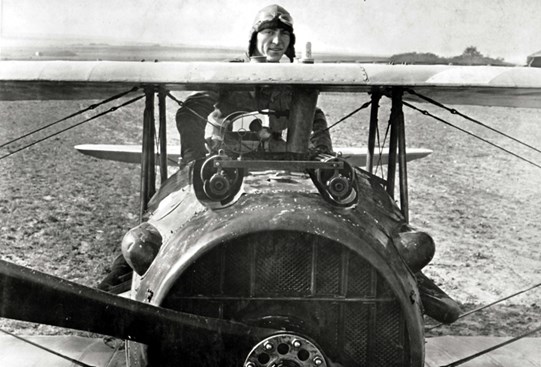
Eddie Rickenbacker, America’s greatest World War I ace, poses aboard his SPAD 13 fighter in 1918. The twin Vickers guns set the standard for forward firepower until the early 1930s.
Specialized weapons packages were quickly developed as well, including up to quadruple-mounts of downward-firing machine guns in the belly of trench-strafing aircraft, controlled by the pilot and reloaded by the observer.
For the aircraft and the gun, World War I created a match made in the Heavens, and then consummated in Hell.
